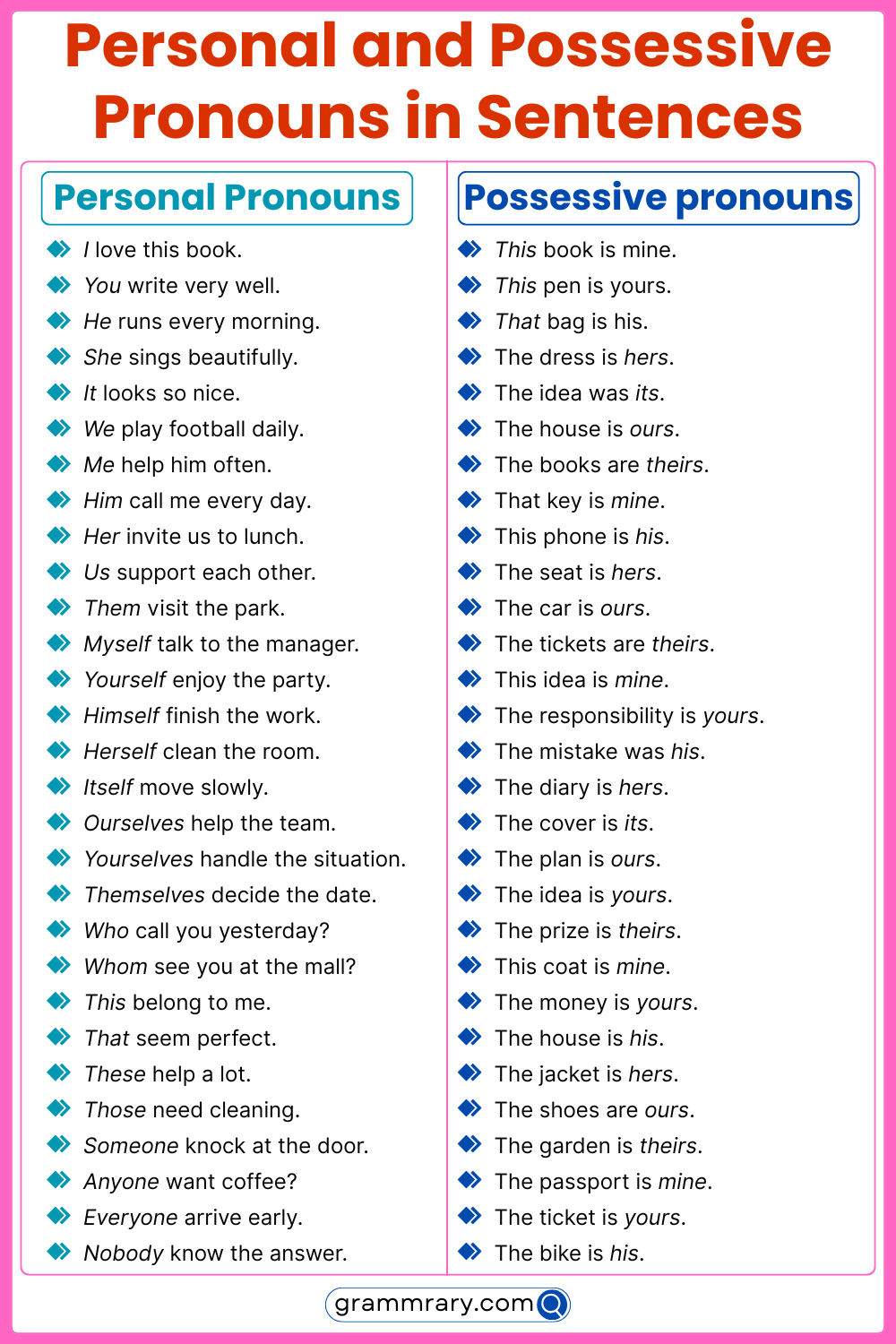When it comes to grammar, possessive pronouns play an essential role in indicating ownership or possession. These pronouns replace nouns and show that something belongs to someone. Understanding how to use possessive pronouns correctly can greatly improve your writing and communication skills.
Whether you are writing a formal essay, a business email, or simply having a conversation with a friend, knowing how to use possessive pronouns can help you convey your ideas more effectively.
Using Possessive Pronouns
Possessive pronouns include words such as “my,” “your,” “his,” “her,” “its,” “our,” and “their.” These pronouns indicate possession or ownership without the need to explicitly state the noun they are referring to. For example, instead of saying “the book of John,” you can simply say “John’s book” using the possessive pronoun “his.”
It is important to match possessive pronouns with the correct nouns they are replacing to avoid confusion or ambiguity. For example, saying “his car” clearly indicates that the car belongs to a male person, while saying “her car” shows that the car belongs to a female person.
Additionally, possessive pronouns can be used to show relationships between people or things. For instance, saying “our project” implies that the project belongs to a group of people, while saying “its goal” indicates that the goal belongs to an organization or entity.
When using possessive pronouns, it is essential to pay attention to the context of the sentence to ensure that the pronoun matches the intended meaning. Using possessive pronouns incorrectly can lead to misunderstandings or misinterpretations of your message.
Overall, mastering the use of possessive pronouns can enhance your writing and communication skills, allowing you to express ownership and relationships more clearly and effectively.
In conclusion, possessive pronouns are valuable tools in the English language that help indicate ownership and relationships without the need for repetitive nouns. By learning how to use possessive pronouns correctly, you can improve the clarity and precision of your writing and communication.
